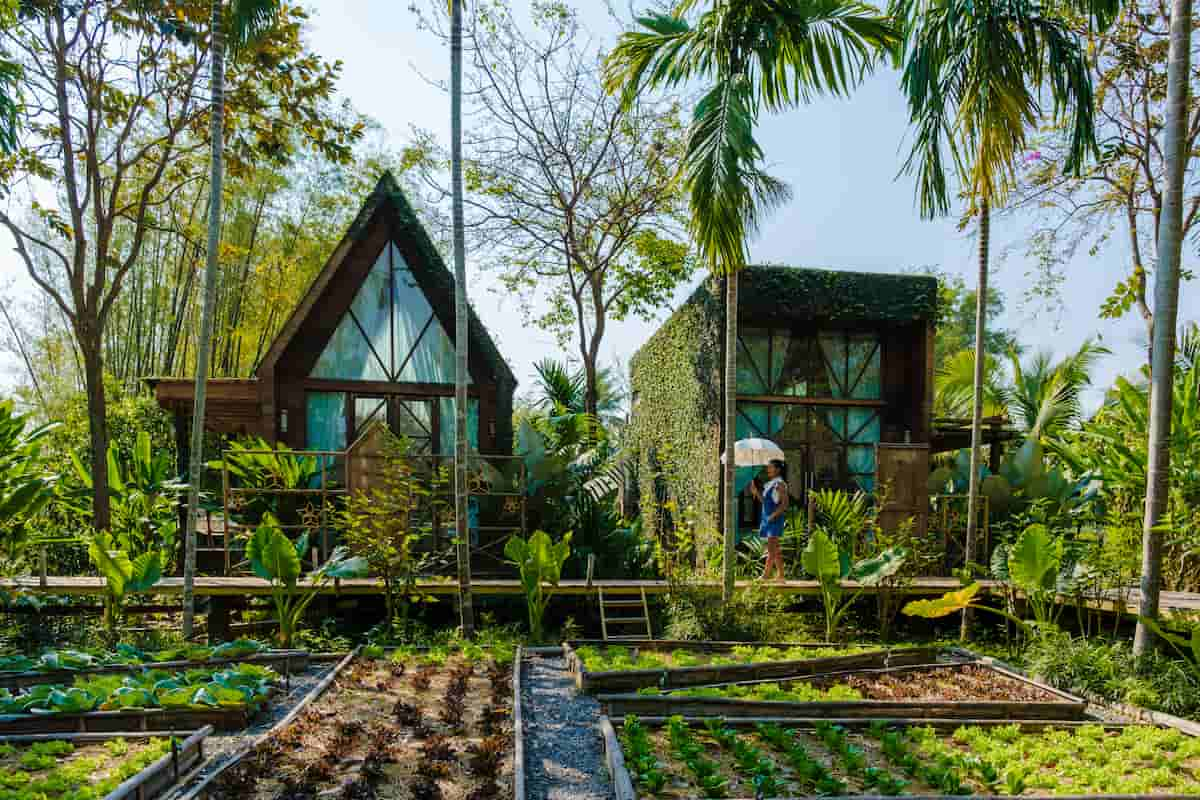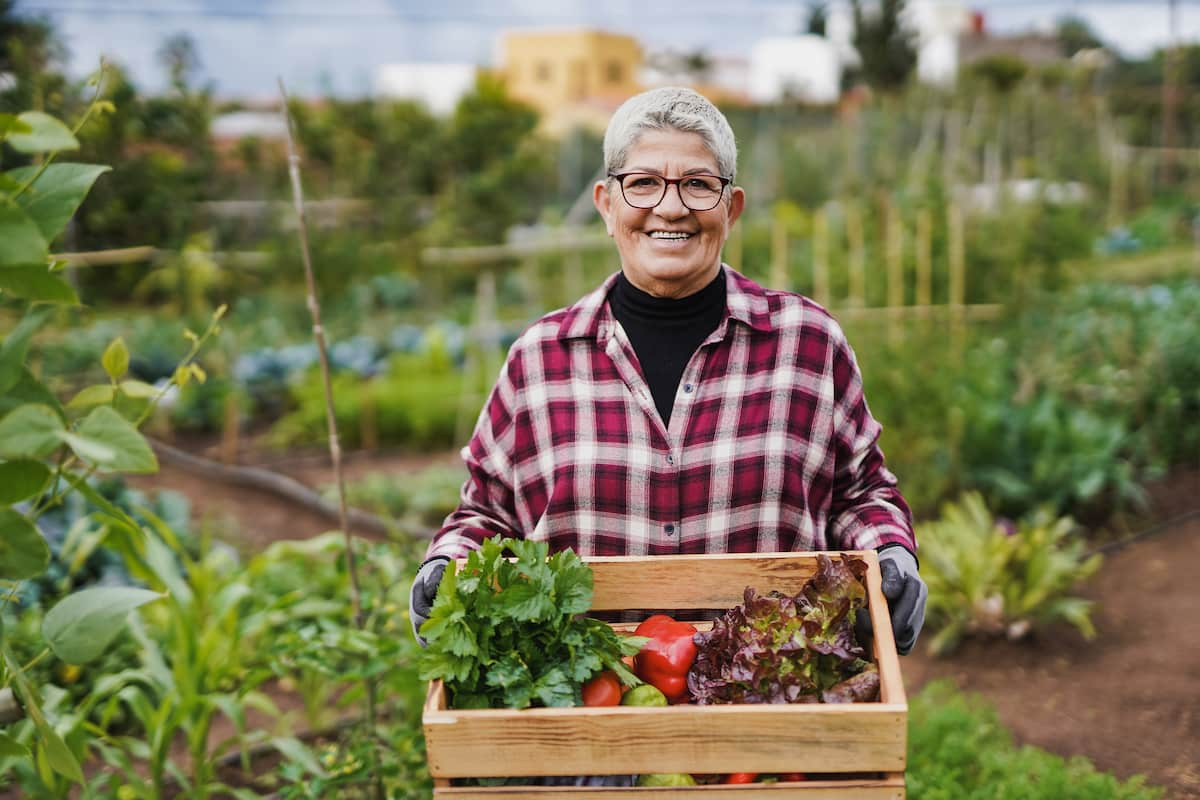The concept of a square-foot vegetable garden has gained immense popularity in recent years as many people are becoming aware of the advantages of organic gardening. This gardening method allows you to grow various vegetables in a small space while promoting sustainable practices. Below we learn about square-foot gardening spacing, square-foot gardening for beginners, creating an organic square-foot vegetable garden from scratch, covering everything from planning and planting to harvesting your produce.

Guide to Start an Organic Square Foot Vegetable Garden
The Basics of Square Foot Gardening
Square-foot gardening involves dividing a garden bed into square-foot sections to maximize space and minimize the need for weeding and maintenance. Each square foot section is planted with a different vegetable variety, allowing for a diverse and vibrant garden.
Advantages of Square Foot Gardening
- Space efficiency: This gardening method allows you to grow more vegetables in a smaller space, making it ideal for urban dwellers and those with limited outdoor areas.
- Minimal maintenance: With a well-planned square-foot garden, weeding and maintenance tasks are reduced, as the densely planted vegetables help to suppress weed growth.
- Accessibility: Raised garden beds are commonly used in square-foot gardening, making it easier for those with physical limitations to tend to their plants.
- Organic practices: This method encourages using organic techniques, such as companion planting and natural pest control, leading to healthier and more sustainable gardens.
Planning Your Square Foot Garden
- Location: Choose a site with ample sunlight (at least 6-8 hours per day), good drainage, and access to water.
- Size: Determine the size of your garden based on the available space and the number of vegetables you wish to grow. A standard 4’x4′ garden bed with 16 square foot sections is a common choice for beginners.
- Soil: Opt for organic, nutrient-rich soil with a pH between 6.0 and 7.0. To improve its fertility, you may need to amend your existing soil with compost, aged manure, or other organic matter.
- Vegetables: Select a mix of vegetables that you enjoy eating, taking into account their growth habits, sunlight requirements, and compatibility with other plants. Consider incorporating companion planting to improve overall garden health and productivity.
Constructing Your Square Foot Garden Bed
- Choose your materials: Cedar or redwood lumber are excellent for their natural resistance to rot and insects. Avoid using treated lumber, which may contain chemicals that can leach into your soil.
- Build the frame: Construct a square or rectangular frame using 2″x6″ or 2″x8″ boards. Secure the corners with galvanized or stainless steel screws.
- Prepare the ground: Remove any weeds or grass from the area where your garden bed will be placed. Level the ground to ensure proper drainage.
- Install a weed barrier: Lay a layer of landscape fabric, cardboard, or newspaper over the ground to prevent weed growth and improve moisture retention.
- Fill the bed: Add a mixture of organic soil, compost, peat moss, and coarse vermiculite to fill your raised bed. This combination will provide excellent drainage and nutrient availability for your vegetables.
In case you missed it: Organic Gardening Solutions with Worm Castings: Sustainable Idea for Healthy Produce

Dividing and Planting Your Square Foot Garden
- Create a grid: Use string, twine, or thin wooden strips to divide your garden bed into equal square-foot sections. This grid will help guide your planting and make it easier to maintain your garden.
- Choose your plants: Refer to your garden plan and select the appropriate vegetable seeds or seedlings for each square foot section. Be sure to follow the recommended spacing guidelines for each plant, as overcrowding can lead to poor growth and increased disease risk.
- Planting: Plant seeds or seedlings according to their specific needs, such as depth, spacing, and watering requirements. Label each section with the name of the vegetable and the planting date to help keep track of your garden’s progress.
- Watering: Water your newly planted garden thoroughly, ensuring the soil is evenly moist and not waterlogged. Continue to water regularly as needed, depending on the specific needs of your plants and local climate conditions.
Organic Pest and Disease Management
- Companion planting: Planting certain vegetables and herbs together can help deter pests and diseases. For example, planting marigolds near tomatoes can help repel nematodes and certain insects.
- Crop rotation: Changing the location of specific vegetable families within your garden each year can help prevent the buildup of soil-borne diseases and pests.
- Natural pest control: Encourage beneficial insects, such as ladybugs and lacewings, by planting flowers that attract them or purchasing and releasing them into your garden.
- Disease prevention: Keep your garden clean and debris-free, and monitor your plants regularly for signs of disease. Remove and dispose of any diseased plants promptly to prevent the spread of pathogens.
Fertilizing and Soil Maintenance
- Organic fertilizers: Apply organic fertilizers, such as compost, aged manure, or worm castings, to provide essential nutrients to your plants. This can be done by side-dressing or top-dressing the soil during the growing season.
- Soil testing: Test your soil regularly to monitor its nutrient levels and pH. This information can help determine the necessary amendments to maintain optimal soil conditions.
- Cover crops: Planting cover crops, such as clover or winter rye, during the off-season can help improve soil structure, suppress weeds, and add nutrients back into the soil.
Harvesting Your Square Foot Garden
- Harvesting guidelines: Familiarize yourself with the optimal harvesting times and methods for each vegetable variety in your garden. Harvesting at the right time will ensure the best flavor and nutritional value.
- Succession planting: As you harvest vegetables from your garden, consider planting new seeds or seedlings in their place to maximize your garden’s productivity throughout the growing season.
- Preserving your harvest: To extend the shelf life of your produce, learn various preservation techniques such as freezing, canning, or drying.
In case you missed it: Organic Garden Pest Control: DYI Step-By-Step Guide

Conclusion
Starting an organic square-foot vegetable garden from scratch may seem daunting initially, but with careful planning and attention to detail, it can be a highly rewarding activities. As you gain experience and confidence in your gardening skills, you can continue to expand and refine your square-foot garden, experimenting with new vegetables, companion planting techniques, and other organic practices.
- Feed Your Flock for Less: Top 10 Tips to Save on Chicken Feed
- Ultimate Guide to Ossabaw Island Hog: Breeding, Raising, Diet, and Care
- Hatching Answers: The Top 10 Reasons Your Chickens Aren’t Laying Eggs
- Eggs and Economics: Breaking Down the Cost of Raising Backyard Chickens
- Defend Your Greens: Proven Methods to Keep Iguanas Out of Your Garden
- Ultimate Guide to Cinnamon Queen Chicken: A Comprehensive Guide for Beginners
- Ultimate Guide to California Tan Chicken: Breeding, Raising, Diet, Egg-Production and Care
- Ultimate Guide to Marsh Daisy Chicken: Breeding, Raising, Diet, and Care
- 10 Types of Chicken Farming Businesses You Can Start for Profits